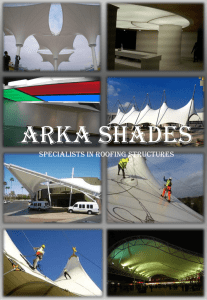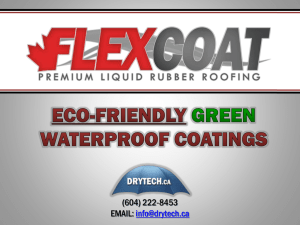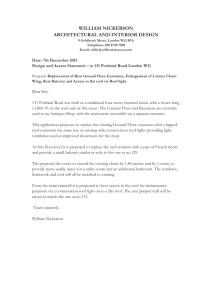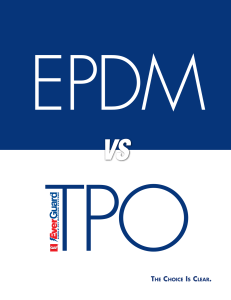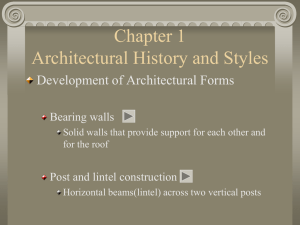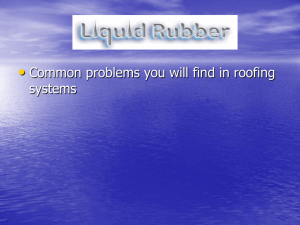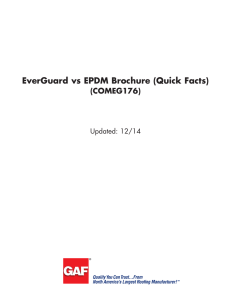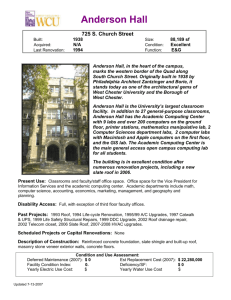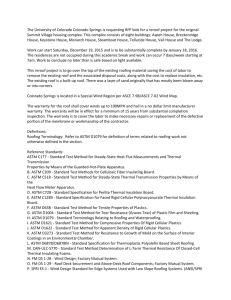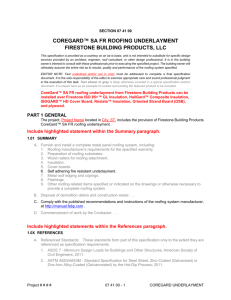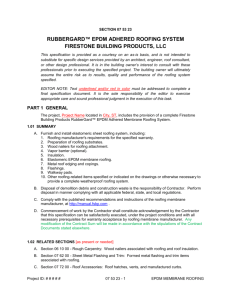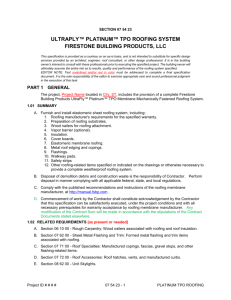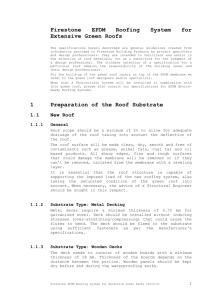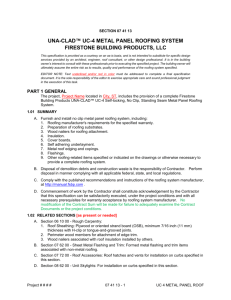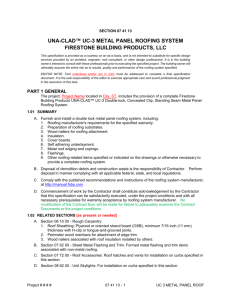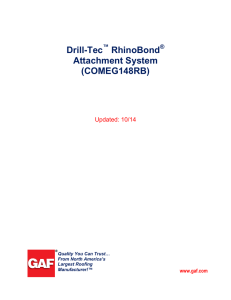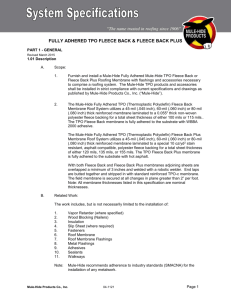Title: Flat Roofing Materials Flat (or low slope) roofs have been a
advertisement
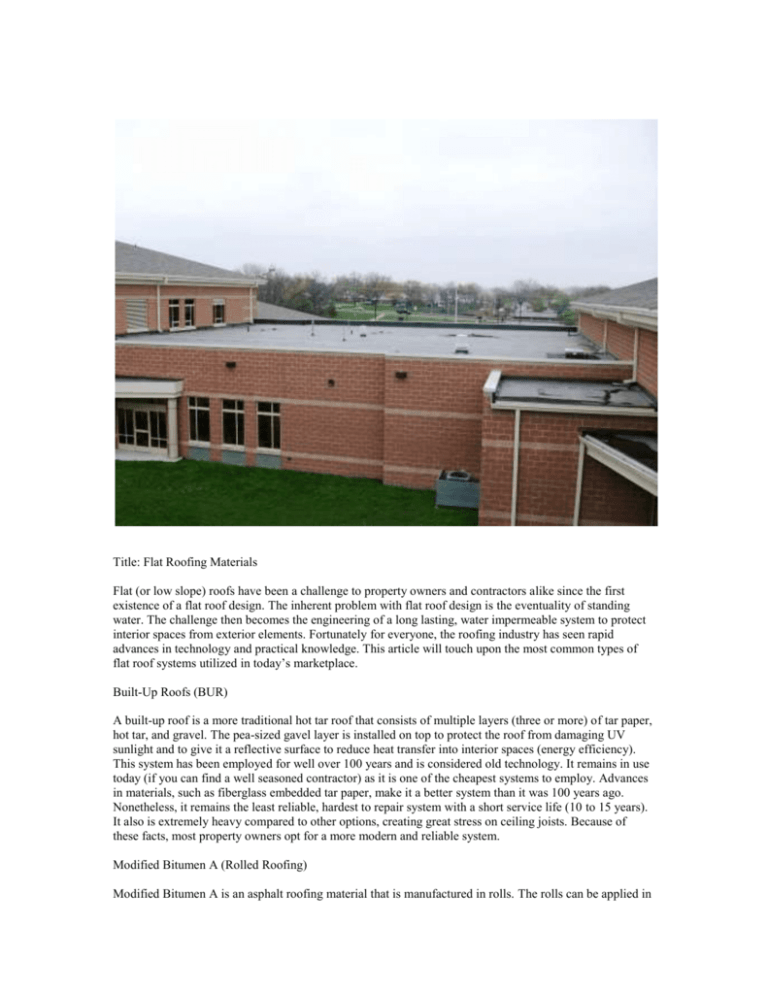
Title: Flat Roofing Materials Flat (or low slope) roofs have been a challenge to property owners and contractors alike since the first existence of a flat roof design. The inherent problem with flat roof design is the eventuality of standing water. The challenge then becomes the engineering of a long lasting, water impermeable system to protect interior spaces from exterior elements. Fortunately for everyone, the roofing industry has seen rapid advances in technology and practical knowledge. This article will touch upon the most common types of flat roof systems utilized in today’s marketplace. Built-Up Roofs (BUR) A built-up roof is a more traditional hot tar roof that consists of multiple layers (three or more) of tar paper, hot tar, and gravel. The pea-sized gavel layer is installed on top to protect the roof from damaging UV sunlight and to give it a reflective surface to reduce heat transfer into interior spaces (energy efficiency). This system has been employed for well over 100 years and is considered old technology. It remains in use today (if you can find a well seasoned contractor) as it is one of the cheapest systems to employ. Advances in materials, such as fiberglass embedded tar paper, make it a better system than it was 100 years ago. Nonetheless, it remains the least reliable, hardest to repair system with a short service life (10 to 15 years). It also is extremely heavy compared to other options, creating great stress on ceiling joists. Because of these facts, most property owners opt for a more modern and reliable system. Modified Bitumen A (Rolled Roofing) Modified Bitumen A is an asphalt roofing material that is manufactured in rolls. The rolls can be applied in a single layer to produce a “membrane” or sometimes utilized in a built-up roof system. Rolled roofing is manufactured with a granular top layer, similar to asphalt or composite shingles, that acts as a wear layer, provides UV protection, and may help reduce heat transfer/energy efficiency. Some types of rolled roofing material are installed by removing the plastic sheet that covers the adhesive, and then just rolling out the material onto the roof deck (peel and stick). Other types of rolled roofing require a torch to heat the adhesive and seal the material to the roof deck (torch-down). The peel and stick types of rolled roofing are not recommended for occupied buildings. Roll roofing is readily available and is sometimes used on outbuildings or barns, but with a service life of 3 to 8 years, it is hardly worth the effort to install. EPDM (Ethylene Propylene Diene Monomer) Rubber Membrane EPDM or rubber membrane roofing first became popular as a flat roof solution in the 1970s. Although rubber technology itself is not very modern, EPDM remains the most common flat roof solution used today. EPDM is the “tried and true” workhorse of the flat roof industry. EPDM will work for almost any flat roof and can be installed over almost any material (wood, concrete, or gypsum). EPDM can be completely glued down (fully adhered) or weighted down with gravel or pavers (ballasted). EPDM roofs have been extensively tested and will last 20 to 50 years, or more, when properly installed and maintained. True cost to own calculations remains extremely favorable for EPDM, keeping this material at the top as far as popularity. Negative attributes for EPDM include little tear or cut resistance making it a less suitable material for high foot traffic areas. TPO (Thermoplastic Polyolefin) Membrane TPO is newer technology utilizing plastic instead of rubber as membrane material. TPO membrane is one of the fastest growing low slope roofing products on the market today. TPO is a membrane type of material installed in a similar fashion to EPDM. TPO touts better tear and puncture resistance than EPDM and exceptional resistance to ultraviolet, chemical, and ozone exposure. Seams are welded together with specialized machines that forces heated air over joints to fuse them together. TPO remains one of the most expensive options for flat roof material, but is well worth the costs in certain circumstances where a roof is expected to handle extensive amounts equipment housing or foot traffic. The reflective white color of TPO is also popular in hot climates as an avenue to reduce utility costs. PVC (Polyvinyl Chloride) Membrane PVC is another thermoplastic type of membrane material that has gained in popularity in recent years. Similar to TPO, PVC also utilizes machine-welded seams. Although PVC is very reliable and long lasting, it has proven to be not very effective in cold climates as it is sensitive to large temperature fuxuations. PVC tends to become brittle in very cold climates and can shatter. In addition, the PVC material components are environmentally unfriendly. PVC is known to produce biohazards at almost every stage of production. Although the list of flat roof material options listed in this article is not all encompassing, it does represent the most common types of material found on flat roofs today. Quality flat roofs are inherently difficult to engineer since each flat roof situation will require a great deal of planning and customization. Be sure to consult with a reputable flat roof contractor regarding the many options and materials available to you. About the Author: Pro Roofing, LLC is a Licensed and Insured Roofing Contractor Located in Madison, WI. Pro Roofing, LLC has been Wisconsin’s Premier Residential and Commercial Roofer Since 1999.

